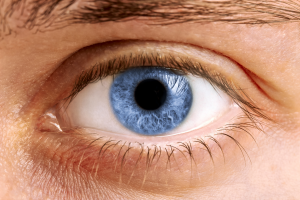 There probably isn’t any part of your body that is more sensitive, exposed, or crucial to your survival than your eyeballs. You use these soft, delicate organs during every waking moment and for just about every task, but unfortunately the only thing that protects them are a few eyelashes and 1mm thick eyelids. Evolution is cruel like that.
There probably isn’t any part of your body that is more sensitive, exposed, or crucial to your survival than your eyeballs. You use these soft, delicate organs during every waking moment and for just about every task, but unfortunately the only thing that protects them are a few eyelashes and 1mm thick eyelids. Evolution is cruel like that.
So given the vulnerability of our eyes, it would be wise to brush up on the first aid measures that should be taken in an emergency to protect them. Below are the most common eye injures and the protective procedures that you need to take to prevent further damage, at least until you can see a doctor:
Chemical Exposure
If a caustic chemical ever gets splashed into your eyes, your first knee jerk response will probably be to close them. In this instance however, that’s a bad idea. You want to keep your eyes open so that the chemical doesn’t get trapped under your eyelids. Find a source of water and rinse them out for 15-20 minutes while keeping your eyes open the whole time, and seek medical attention.
Foreign Debris
We’ve all had some kind of debris in our eyes at one point or another. It’s a situation that your eyes are normally capable of correcting themselves by tearing up and washing the debris away. But if the condition persists, refrain from rubbing your eyes. It’ll only irritate them more. Pull your upper lid down and blink repeatedly. If that doesn’t work, you need to pull open both eyelids and roll your eye around before rinsing it out. You can repeat that process a few times if it doesn’t work right away.
Embedded Foreign Object
If you have a foreign object embedded in your eye, the measures you need to take aren’t what you might expect. Unlike the previously mentioned first aid procedures, you’re not supposed to wash out your eyes (this also applies to any cut or puncture wounds to the eye). You’re also not supposed to remove the object. Find something that you can place over the eye without applying too mush pressure to it, such as large, loose-fitting goggles or a plastic cup; then seek medical attention.
Blunt Force Trauma
The most important thing to do if you suffer a blow to the eye, is to reduce the swelling. Apply a cold compress or ice to the eye for 5 or 10 minute intervals. You can also take ibuprofen for the pain and swelling. After a 24 hour period, begin using a warm compress instead. You need to look out for any bleeding or vision problems. Or if it hurts to move your eyes, there may be damage to the eye socket. In those cases, you need to find a doctor.
Welder’s Flash
You probably already know that the light from a welding arc can hurt your eyes. This is called “welder’s flash”, and it’s why every welder has to wear a mask with tinted glass. However, there’s a good reason why this condition goes by many names, including “snow blindness” and “corneal flash burn.” It can be caused by any overexposure to ultraviolet light. Sunlight that reflects off of snow, sand, or water can also cause the condition.
The symptoms may include eye pain, severe light sensitivity, bloodshot eyes, blurry vision, and a gritty sensation under the eyelids. To treat the condition, you need to stay indoors in a dark room and wear sunglasses as much as possible for 1 or 2 days. You should also be applying artificial tears on a regular basis. If you wear contact lenses, remove them until your eyes heal. Most victim’s of welder’s flash find that a cold compress helps alleviate the symptoms. If your symptoms continue for more than a couple of days or worsen after 1 day, then you should see a doctor.
References:
http://www.healthline.com/health/first-aid/eye-care#blows-to-the-eye
http://www.webmd.com/first-aid/eye-injuries-treatment
http://www.allaboutvision.com/conditions/snowblind.htm
